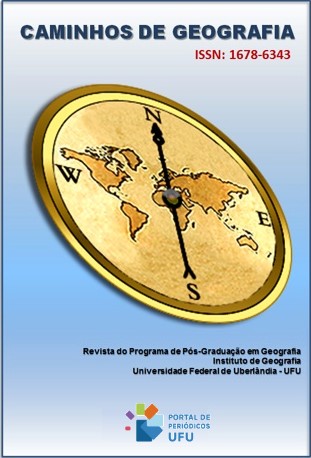GEOLOGY AND HYDROGEOCHEMICAL ANALYSIS OF GROUNDWATER IN THE PARDO RIVER WATERSHED, SOUTHERN BRAZIL: A CASE STUDY
DOI:
https://doi.org/10.14393/RCG2510171428Palabras clave:
Hydrogeology, Hydrostratigraphy, PRE-Guarani Aquifer, Guarani Aquifer System, Serra Geral Aquifer SystemResumen
Groundwater reserves are strategic sources for public water supply. This regional study, accompanied by geomorphologic, geologic, and hydrostratigraphic maps, highlights the importance of stratigraphic and hydrochemical research in preserving water in areas susceptible to contamination, such as aquifer recharge zones. The aquifers were subdivided into the Pre-Guarani Aquifer System (PRE-GAS), the Guarani Aquifer System (GAS), and the Serra Geral Aquifer System (SGAS). This article paper analyzed the hydrogeological characteristics of the Pardo River watershed, focusing on the lithostratigraphic units of the Rosário do Sul Group (PRE-GAS), the Botucatu Formation (GAS), and the Caxias and the Gramado facies of the Serra Geral Formation (SGAS) present in the study area. In terms of hydrogeochemistry, the water from the wells was classified as sodium bicarbonate in the PRE-GAS, and as calcium bicarbonate in the GAS and SGAS. The average specific capacity of the 102 wells analyzed was 0.72 m3/h/m for the PRE-GAS, 1.76 m3/h/m for the GAS, and 0.44 m3/h/m for the SGAS. The use of the public domain SIAGAS database is recommended, but it requires proper validation and standardization. The study reinforces a sustainable approach to ensure the long-term availability of groundwater resources in the region.
Descargas
Descargas
Publicado
Cómo citar
Número
Sección
Licencia
Derechos de autor 2024 Marco Antonio Fontoura Hansen, Henrique Carlos Fensterseifer, Cesar Augusto Moreira, Felipe Guadagnin, José Pedro Rebés Lima

Esta obra está bajo una licencia internacional Creative Commons Atribución-NoComercial-SinDerivadas 4.0.
Los autores que publican en esta Revista aceptan los siguientes términos: a) Autores conserva los derechos de autor y otorga a la revista el derecho de primera publicación, con el trabajo bajo licencia Creative Commons Attribution-NonCommercial NoDerivs 4.0 International. b) Se permite y anima a los autores a publicar y distribuya su trabajo en línea (por ejemplo, en repositorios institucionales o en su sitio web personal), ya que esto puede generar cambios productivos, así como incrementar el impacto y cita de trabajo publicado. c) Por el hecho de aparecer en este diario de acceso público, los artículos son de libre uso, con sus propias atribuciones, en aplicaciones educativos y no comerciales.











